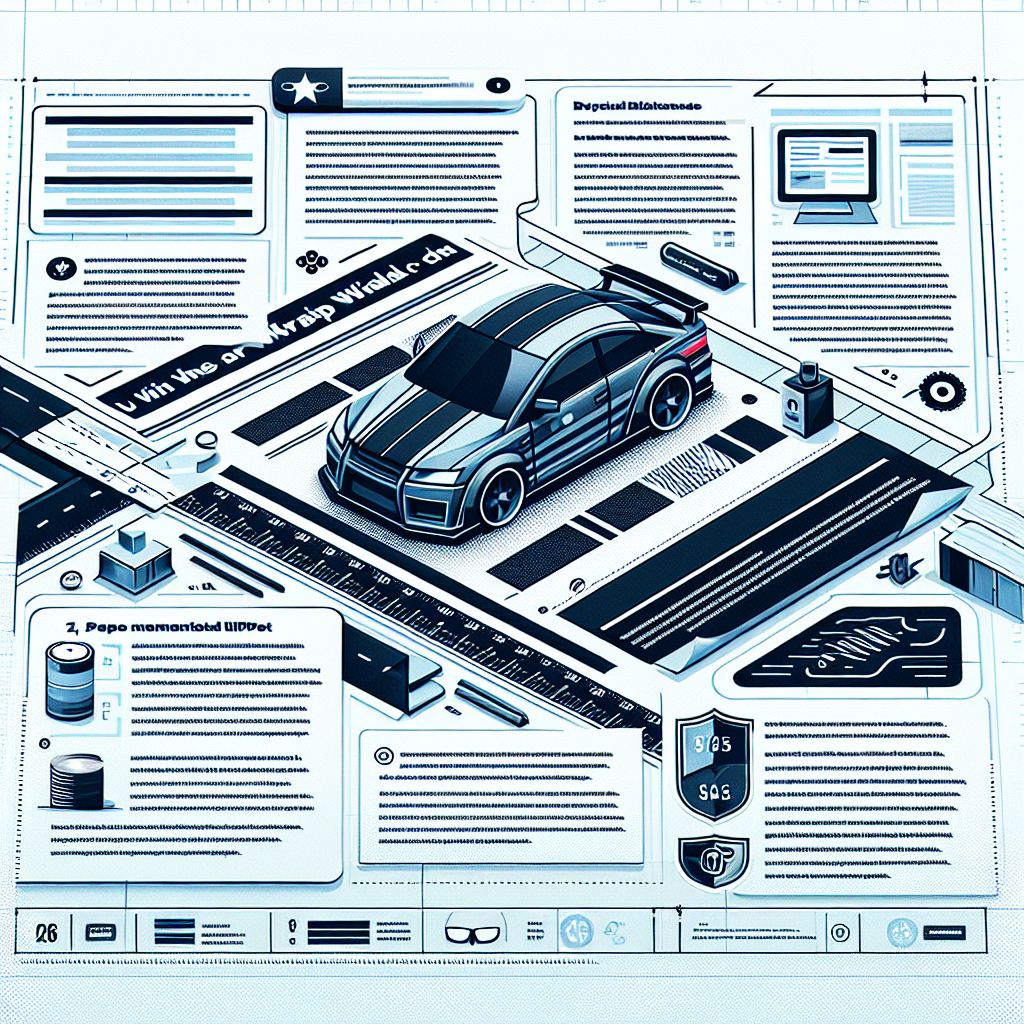
Article-at-a-Glance
- Vermont requires vehicle owners to notify the DMV of any car wraps or modifications to their vehicle’s exterior.
- Vehicle wraps can affect your insurance coverage; it’s crucial to check with your provider to ensure your wrap is included in your policy.
- Car wraps in Vermont must not obstruct visibility or feature offensive material, and there are specific guidelines for window tints and license plate covers.
Vermont Car Wrap Regulations
Imagine cruising down the scenic roads of Vermont with your vehicle donning a sleek, personalized wrap. Sounds exciting, right? But before you dive into the world of vehicle customization, you need to understand the local car wrap laws to avoid any legal hiccups. Here’s the lowdown on what Vermont expects from you when you decide to wrap your car.
What You Need to Know Before Wrapping Your Car
First things first, Vermont is pretty strict about vehicle modifications. A car wrap is considered a modification, and as such, you’ve got to play by the rules. Before you even pick out your wrap design, you need to be aware of the state’s requirements.
Vermont DMV Notification: Avoiding Penalties
One of the most important steps you need to take is notifying the Vermont Department of Motor Vehicles (DMV). It’s not just a friendly heads-up; it’s a legal requirement. If you skip this step, you could be facing fines or even suspension of your vehicle’s registration. So, make sure you let them know about your new wrap as soon as it’s done.
Now, you might wonder, “How exactly do I notify the DMV?” It’s simple: familiarize yourself with the DMV notification requirements specific to your state.
- Fill out the necessary forms provided by the Vermont DMV.
- Provide details about the wrap, including the extent of the wrap (full or partial) and any changes to the vehicle’s color.
- Submit the form either in person or by mail, depending on the DMV’s requirements.
Remember, this isn’t just a formality. It’s about keeping your vehicle’s records up to date and avoiding legal issues down the road.
Vermont Car Wrap Regulations Summary
| Regulation | Requirement | Penalty |
|---|---|---|
| DMV Notification | Owners must notify the Vermont DMV of any vehicle wrap or modification to the vehicle’s exterior. | Failure to notify the DMV can result in fines and potential registration suspension. |
| Insurance Coverage | Vehicle wraps may impact insurance coverage. Owners should consult their insurance provider to ensure the wrap is covered. | Driving without proper insurance coverage can lead to fines and liability issues. |
| Legal Considerations | Vermont has laws regulating the content and placement of vehicle wraps. Wraps cannot obstruct visibility or contain offensive material. | Violations can result in fines and the requirement to remove the wrap. |
References:
Insurance Considerations
Next up, let’s talk about insurance. When you wrap your car, you’re not just changing its look; you’re potentially altering its value and risk profile. That’s why it’s critical to touch base with your insurance company before proceeding with a wrap.
Does a Wrap Affect Your Coverage?
Most insurance providers consider a car wrap a significant alteration. This means your existing coverage might not automatically extend to the new wrap. The last thing you want is to get into an accident and find out that your flashy wrap isn’t covered. So, make sure to:
- Inform your insurer about your intention to get a wrap.
- Discuss any changes in policy terms or premiums that might result from the wrap.
- Get written confirmation that your wrap is covered under your policy.
Insurance companies appreciate transparency, and by keeping them in the loop, you’re ensuring that you’re fully protected.
Navigating Policy Adjustments with Your Insurer
If your insurer agrees to cover the wrap, they might adjust your policy. This could mean a slight increase in your premium because of the perceived increased value of your wrapped car. However, don’t let this deter you. It’s better to pay a little extra than to be left uncovered in the event of damage to your wrap.
Here’s a quick checklist for your insurance discussion:
- Ask about any additional coverage needed for the wrap.
- Clarify if the wrap will affect your premiums and by how much.
- Understand the process of claiming for wrap damage, should it occur.
By taking these steps, you’re not just complying with Vermont’s laws; you’re also protecting your investment in your vehicle’s appearance.
Partial Wrap Guidelines
If you’re considering a partial wrap for your vehicle, it’s essential to know that the same notification and insurance rules apply as with full wraps. The partial wrap should not interfere with the car’s safety features or visibility. In Vermont, whether it’s a racing stripe or a door decal, the law requires that your vehicle remains identifiable and safe on the road.
Here’s what you need to do for a partial wrap:
- Choose the part of the vehicle you want to wrap. Common choices include the hood, doors, or rear.
- Ensure the design does not cover any essential markings or identification numbers.
- Notify the DMV and update your insurance policy, just as you would for a full wrap.
The Do’s and Don’ts of Window Tints
Window tints can be a stylish addition to your vehicle, but in Vermont, there are specific rules you must follow. These regulations are in place to ensure safety for both you and other road users by maintaining visibility.
When it comes to window tints, Vermont law is clear:
- The front side windows must allow more than 70% of light in.
- The back side and rear windows can have any tint darkness if you have both side mirrors.
- Reflective tint is prohibited on any windows.
Legal Tint Limits
Adhering to the legal tint limits is crucial. If you’re unsure about the specifications, consult a professional or refer to Vermont’s DMV guidelines. Remember, the goal is to enhance your vehicle’s aesthetics without compromising on safety or running afoul of the law.
Risks of Non-Compliance
Non-compliance with tint regulations can lead to fines and being required to remove the tint. It’s not worth the risk, so always double-check that your tint meets Vermont’s legal standards.
License Plate Wrap Restrictions
In Vermont, you must keep your license plate visible and legible at all times. This means no wraps or covers that can obscure the plate. It’s a simple rule, but it’s one that’s strictly enforced for obvious reasons. Your license plate is your vehicle’s ID, and it needs to be clear for law enforcement and toll cameras.

Designing Your Vehicle Wrap
Designing your car wrap can be one of the most exciting parts of the process. You get to choose colors, patterns, and graphics that reflect your personality. However, it’s important to keep in mind that Vermont has regulations on what is and isn’t allowed on a vehicle wrap.
Legal Car Wrap Designs: What’s Allowed?
As you brainstorm your perfect car wrap, remember that Vermont prohibits any wrap that features offensive material or could be considered a distraction to other drivers. This includes, but is not limited to, explicit graphics or language, and any imagery that could be interpreted as threatening or violent.
Here are some tips to ensure your design is legal:
- Steer clear of imagery that could be considered offensive.
- Keep your designs non-distractive – no excessive glitter or reflective materials.
- Make sure your wrap doesn’t resemble law enforcement vehicles to avoid confusion.
Distinguishing Between Full and Partial Designs
When it comes to full versus partial designs, the distinction is all about coverage. A full wrap covers the entire vehicle, offering a complete transformation. A partial wrap, on the other hand, might just cover a specific section, like the hood or doors, giving a touch of personalization without the full commitment.
Here’s what you need to consider: familiarize yourself with the Vermont car wrap regulations.
- The extent of the wrap can affect the cost and time it takes to install.
- Think about how the design will flow on the vehicle. Partial wraps should integrate smoothly with the car’s original color.
- Full wraps offer a bigger canvas for creativity but remember to keep it legal.
Reviewing Types of Finishes and Materials
Vehicle wraps come in various finishes and materials, each with its own look and feel. You can choose from matte, gloss, satin, carbon fiber, and even textured wraps like brushed metal. The choice you make will affect the final appearance of your vehicle, so pick something that aligns with your style and complies with Vermont’s regulations.
Avoiding Illegal Wrap Themes
While personalizing your vehicle, it’s essential to avoid illegal themes. Anything that could be misinterpreted as an official vehicle or impersonating an officer is a big no-no. Keep it unique, keep it personal, but above all, keep it legal.
Remember: for specific state regulations regarding car wraps, such as Vermont car wrap rules, always consult the local DMV or legal guidelines to ensure compliance.
- Emergency vehicle colors and patterns are off-limits for public use.
- Avoid designs that could be mistaken for government or official use.
Recognizing Prohibited Content: Violence and Pornography
When designing your wrap, steer clear of content that depicts violence or pornography. Such material is not only offensive to many but is also illegal in Vermont. The aim is to express yourself while respecting the community and adhering to state laws.
Financial Aspects of Car Wraps
Let’s talk money. Wrapping your car is an investment, and like any investment, it’s important to know the costs upfront. In Vermont, the price range for a full vehicle wrap can vary widely, from $2,000 to $4,500, while partial wraps may cost between $1,000 and $2,500.
How Much Should You Budget for a Car Wrap?
The budget for your car wrap will depend on several factors, including the size of your vehicle, the complexity of the design, and the quality of the materials used. Here’s a breakdown:
| Wrap Type | Cost Range |
|---|---|
| Full Vehicle Wrap | $2,000 – $4,500 |
| Partial Vehicle Wrap | $1,000 – $2,500 |
| Decals | $250 – $1,500 |
These costs are estimates and can vary based on individual circumstances. Always get a quote from a reputable wrap shop before making a decision.

Frequently Asked Questions
How Do I Notify the DMV About My Car Wrap?
To notify the DMV, you’ll need to fill out a vehicle modification form, which can be found on their website or at a local DMV office. Include details about the wrap, such as the extent of coverage and any color changes. You can submit the form in person or by mail, depending on the DMV’s requirements.
Will Adding a Wrap to My Car Affect My Insurance Premiums?
It might. Since a wrap can change the value and risk profile of your vehicle, your insurance premiums could be affected. Always inform your insurer about the wrap and ask how it will impact your policy. They may require you to adjust your coverage.
What Are Some Legal Design Elements I Can Include in My Wrap?
You’re free to get creative with your wrap as long as it doesn’t include offensive material, obstruct visibility, or mimic emergency vehicles. Think about using Vermont’s landscapes, wildlife, or cultural icons in your design for a unique and legal look.




